A holon is something that is simultaneously a whole in and of itself, as well as a part of a larger whole. In other words, holons can be understood as the constituent part–wholes of a hierarchy. Holons are sometimes discussed in the context of self-organizing holarchic open (SOHO) systems.
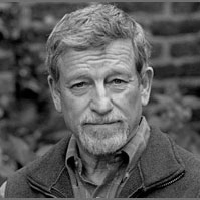
Michael Scammell is an English author, biographer and translator of Slavic literature.

Darkness at Noon is a novel by Hungarian-born novelist Arthur Koestler, first published in 1940. His best known work, it is the tale of Rubashov, an Old Bolshevik who is arrested, imprisoned, and tried for treason against the government that he helped to create.

The Sleepwalkers: A History of Man's Changing Vision of the Universe is a 1959 book by Arthur Koestler. It traces the history of Western cosmology from ancient Mesopotamia to Isaac Newton. He suggests that discoveries in science arise through a process akin to sleepwalking. Not that they arise by chance, but rather that scientists are neither fully aware of what guides their research, nor are they fully aware of the implications of what they discover.

Janus: A Summing Up is a 1978 book by Arthur Koestler, in which the author develops his philosophical idea of the holarchy. First introduced in Koestler's 1967 book, The Ghost in the Machine, the holarchy provides a coherent way of organizing knowledge and nature all together.

A coincidence is a remarkable concurrence of events or circumstances that have no apparent causal connection with one another. The perception of remarkable coincidences may lead to supernatural, occult, or paranormal claims, or it may lead to belief in fatalism, which is a doctrine that events will happen in the exact manner of a predetermined plan. In general, the perception of coincidence, for lack of more sophisticated explanations, can serve as a link to folk psychology and philosophy.

The Call-Girls: A Tragi-Comedy with Prologue and Epilogue is a novel (ISBN 0-09-112550-2) by Arthur Koestler. It was published in October 1972 and its plot tells the story of a group of academic scientists struggling to understand the human tendency towards self-destruction, while the group members gradually become more suspicious and aggressive towards each other.

Paul Kammerer was an Austrian biologist who studied and advocated Lamarckism, the theory that organisms may pass to their offspring characteristics acquired in their lifetime, meaning variation would be directed towards creating adaptations.

The Thirteenth Tribe is a 1976 book by Arthur Koestler advocating the Khazar hypothesis of Ashkenazi ancestry, the thesis that Ashkenazi Jews are not descended from the historical Israelites of antiquity, but from Khazars, a Turkic people. Koestler hypothesized that the Khazars migrated westwards into Eastern Europe in the 12th and 13th centuries when the Khazar Empire was collapsing.

The Gladiators (1939) is the first novel by the author Arthur Koestler; it portrays the effects of the Spartacus revolt in the Roman Republic. Published in 1939, it was later reprinted in other editions.
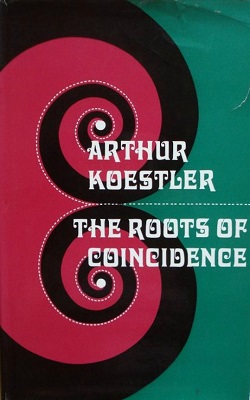
The Roots of Coincidence is a 1972 book by Arthur Koestler. It is an introduction to theories of parapsychology, including extrasensory perception and psychokinesis. Koestler postulates links between modern physics, their interaction with time and paranormal phenomena. It is influenced by Carl Jung's concept of synchronicity and the seriality of Paul Kammerer.
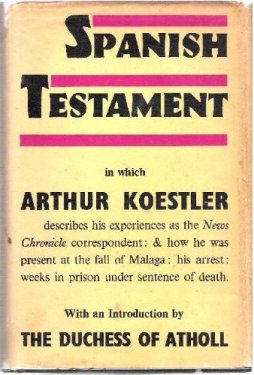
Spanish Testament is a 1937 book by Arthur Koestler, describing his experiences during the Spanish Civil War. Part II of the book was subsequently published on its own, with minor modifications, under the title Dialogue with Death. Koestler made three trips to Spain during the civil war; the third time he was captured, sentenced to death and imprisoned by the Nationalist forces of General Franco. Koestler was working as an espionage agent on behalf of the Comintern and as an agent of the Second Spanish Republic's official news agency, using for cover accreditation to the British daily News Chronicle.

Dialogue with Death, a book by Arthur Koestler, was originally published in 1937 as a section of his book Spanish Testament, in which he describes his experiences during the Spanish Civil War. Part II of the book was subsequently decoupled from Spanish Testament and, with minor modifications, published on its own under the title Dialogue with Death. The book describes Koestler’s prison experiences under sentence of death. The book was written in the late autumn of 1937 immediately after his release from prison, when the events were still vivid in his memory.

The Invisible Writing: The Second Volume Of An Autobiography, 1932-40 (1954) is a book by Arthur Koestler.

Arthur Koestler, was a Hungarian-born author and journalist. Koestler was born in Budapest and, apart from his early school years, was educated in Austria. In 1931, Koestler joined the Communist Party of Germany, but he resigned in 1938 after becoming disillusioned with Stalinism.
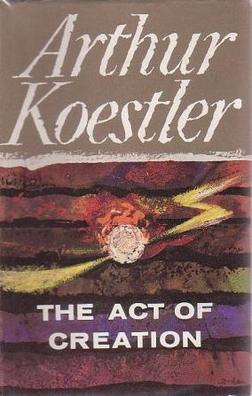
The Act of Creation is a 1964 book by Arthur Koestler. It is a study of the processes of discovery, invention, imagination and creativity in humour, science, and the arts. It lays out Koestler's attempt to develop an elaborate general theory of human creativity.

Stranger on the Square is the third volume of Arthur Koestler's autobiography, published posthumously in 1984. It was co-authored with his wife Cynthia Koestler, née Jefferies, and includes autobiographical notes of her as well. The book was published by Hutchinson, London 1984, 242 pages including Index. ISBN 0-09-154330-4. It was edited by Harold Harris, who wrote the Introduction and Epilogue. He was Koestler's editor for many years. The book is illustrated with seven monochrome photographs plus a colour and another monochrome photograph on the dustcover.

Arthur Koestler: The Story of a Friendship is a book by George Mikes published in 1983, soon after Arthur Koestler’s suicide. As the author states in the Introduction, the book is not a biography of the subject but a series of recollections and anecdotes of a friendship spanning more than thirty years from 1952 up to the time of Koestler’s suicide in March 1983.
The Encyclopaedia of Sexual Knowledge, under the editorship of Dr. Norman Haire (1892–1952), is the first of a trilogy of sexual encyclopaedias by Arthur Koestler writing under the pen name of ‘Dr. A. Costler’. It is the English version, published by Koestler's cousin Francis Aldor in 1934, of the book L'encyclopédie de la vie sexuelle that Koestler in 1933 wrote, together with "A. Willy" and the German Dr. Ludwig Levy-Lenz. The second book is Sexual Anomalies and Perversions, Physical and Psychological Development, Diagnoses and Treatment. The title of the third book is, in the original French edition of 1939, L'Encyclopédie de la famille. This third book was subsequently translated into English and published under various titles and with changes to the structure and text of the original edition. The name of ‘Dr. Costler’ as the author or co-author of the book is omitted from later editions.
The first book contained chapters by two other authors; the second I wrote alone; the third contained chapters by Manès Sperber.
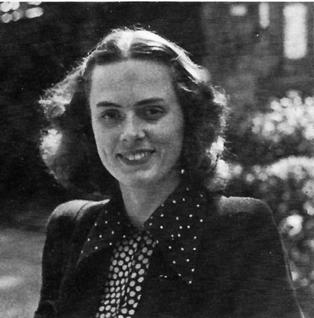
Daphne Hardy Henrion was a British sculptor, a member of the Royal Society of British Sculptors and an intimate of the writer Arthur Koestler.


















